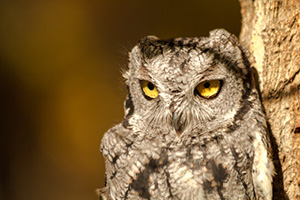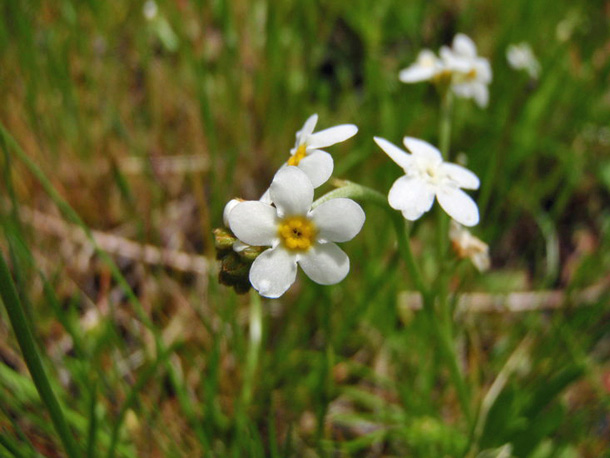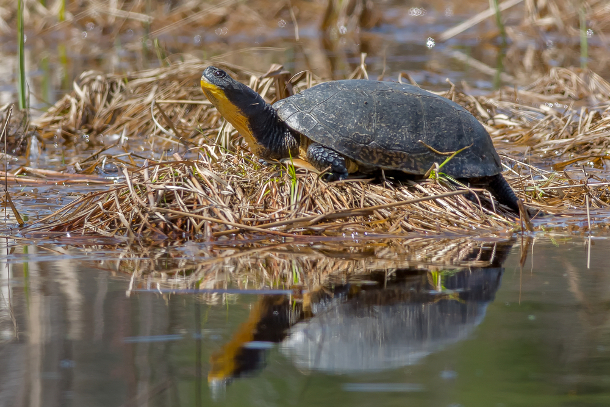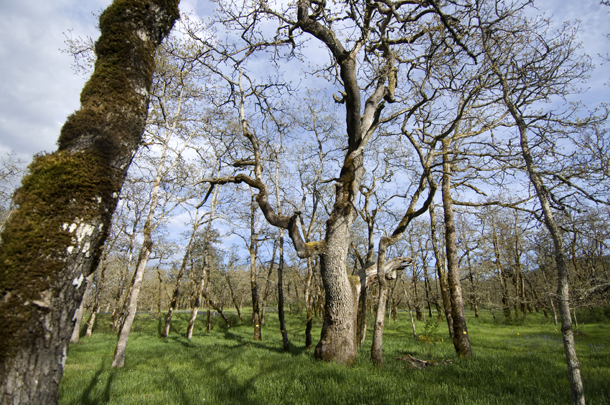
[Editor’s note: In previous instalments of this Tyee Solutions Society series, Chris Wood profiled what death row looks like for endangered species and their landscapes in three Canadian provinces. In this personal concluding essay, he reflects on his own past, and the future facing those vanishing places.]
I am death. I am the son of death.
This admission was forced on me as I reported on the unbearable ecocide that we mainly European settler humans have committed on landscapes and their inhabitants from coast to continental coast.
I say "unbearable" because for many of those inhabitants the loss of their landscapes was just that: they did not survive it. A number of the rest are on nature's equivalent of death row.
And my own hands are dirty.
By good fortune I grew up under the eaves of one of the last shreds of the mixed hardwood forest, grassland prairie and moist undergrowth that once stretched continuously from present-day Oshawa to Windsor -- known to ecological historians as the great Carolinian forest.
I could, and eagerly did, hunt for the tiny, glistening orange-and-black lizards that half a century ago could still occasionally be found under moss-covered rocks. More than once I brought one home to keep in a bottle until it died.
Later, my family built a cabin on an island in Ontario's Georgian Bay, a place where Massasauga rattlesnakes had lived untroubled off mice and frogs for 10,000 years or so. Then we moved in. When a snake showed up, my father killed it.
The landscape where the salamander and the snake, but also mink and moose, snapping turtles, fleet-winged flycatchers and long-stalked orchids once lived out their lives in an intimate dance of mutual support has gone. We took it -- for cornfields and backyards and malls, and the rails and pavement and cables that hold them all together.
And we're still taking it. Small boys and protective parents continue to pick away at the dwindling few survivors. We chip away at their last hideouts to make way for another bridge, another box store. And on the whole, we remain as unaware as ever of the richness of the lives we are taking.
Four hundred struggling souls
This is my fortieth year as a reporter, and I've spent much of my career writing about environmental threats. Yet I was still unprepared for the feelings stirred by an assignment that forced me to contemplate the literally innumerable lives, plant and animal, the charismatic and the humble, that are the fabric of Canada's endangered landscapes.
Did you know we are about to lose, if we haven't already, our last bright-yellow-and-white seaside birds-foot lotus? Our last white-clustered fragrant popcornflower? How about our last cucumber tree, so named for the shape of its unripe fruit?

No, I didn't know any of those existed either, until I learned that they were almost gone.
To scroll through the long list of species the Canadian government acknowledges are "at risk" within our national borders -- an almost certainly incomplete accounting that nonetheless runs to more than 400 names -- is to step into a ghost world of astonishing variety, captured in the observant whimsy of the naturalists who catalogued and named its inhabitants in the 19th and 20th centuries.
Kellogg's rush: a small, nearly leafless plant that lives, or lived, in small damp depressions in the soil. The brick-red Taylor's checkerspot and dark-winged half-moon hairstreak -- both butterflies. Bert's predaceous diving beetle, and the Bogus Yucca moth. Dwarf woolly-heads and Lindley's false silverpuffs, both flowering plants. The nocturnal screech owl and the aerobatic fly-catcher. The lake chubsucker (a small fish) and the flooded jellyskin (a lichen). And no, I didn't make those last two up.
In all, 52 species of mammals that once roamed what's now Canada are listed as "threatened," "endangered" or "of special concern," along with 71 varieties of birds, 56 species of reptile and amphibian, 34 insects and nearly 190 different "vascular" plants -- the kind with stalks -- a group that doesn't including 34 more species of moss and lichen that are also known to be at risk.
Every name on the list has a story and a community, a landscape and ecological dancing partners. Those partners provided what each living being needed, and each creature paid it forward by providing some other living beings with what they needed.
Usually it was something to eat, but not always. Sometimes it was shelter, sometimes a place to nest. The unwitting transport of a yellow dust of pollen to a distant blossom. The microbial capture of minerals in the soil and their handoff into the pores of root systems.
To each remaining being, life is the same matter of urgent importance it is to you or me. Some possess complex societies: bird pairs that mate for life; extended wolf clans ranked by strict orders of status.
Now, even the simple act of reproduction is impossible for many. Even if the last wild Blanding's turtle makes it to the end of a natural lifespan that can run close to a century, it is likely to die a lonely virgin, cut off from a genetic partner by eight lanes of freeway traffic.

What could be done
Perhaps I was too affected as a child by the fictional worlds of Beatrix Potter (Peter Rabbit) or C.S. Lewis (talking mice, for heaven's sake). Perhaps I find it too easy, feeling my dog's fear when we visit the vet, to imagine the mortal terror in a caribou doe's eyes as the wolves close in.
But here's a fact: mammals share most of our suite of human emotions. Birds display a remarkably wide spectrum of our problem-solving skills. Some of the smallest creatures of all, bacteria, are quite literally a part of us: occupying our guts in entire communities we can't live well without.
Indeed, until recently this continent's people shared an infinitely complex and spatially unbroken web of relationships that made room for everyone. The blue camas flowers growing under the eaves of a Garry oak on Vancouver Island attracted bees that also pollinated the flowers around it; their own roots helped feed the humans who maintained the open forest land with fire.
In a little under a century and a half, the Euro-Canadian economy of extraction and development -- turning forests into cornfields and meadows into suburbs -- has left that web in shreds and tatters. The turtles and salamanders, along with the totemic grizzly and the wind-blown popcornflower, hang on as fugitives in shrinking patches of dwindling cover.
For many, probably for most, the future holds nothing beyond more loss of home, more stress at the hands of humans, more individual death and genetic exhaustion. And whatever kind of sadness an animal can feel.
Meanwhile, we are giving nothing back.
We might, if we had the will, enlarge death row. We could expand its ranges to provide more of the coveted forest and prairie "interior" that many species require, and reconnect some of its wings with protected corridors for wild creatures to move among them.

We could, more simply, just stop taking. Adopt a sort of "zero-tolerance" rule for any development, however otherwise attractive, that steals even a little bit more from a refuge landscape already failing under a thousand cuts. Live with the inconvenience of making do with what we've already seized from these all-but-vanished landscapes, and turned into killing zones for their dwindling wild inhabitants.
We could do those things.
But they would take a comprehensive federal-provincial strategy within an international one. Nature's regions have little to do with the divisions we've drawn on the continent. And they're not on any government's do-list. Turtles don't vote.
"The problem isn't one thing," Scott Gillingwater, an endangered species ecologist working to save Ontario's last few wild snakes and salamanders, told me. "Or 10 things. It's humans."
It's me. And, I'm sorry to have to say, it's you. ![]()
Read more: Environment
















Tyee Commenting Guidelines
Comments that violate guidelines risk being deleted, and violations may result in a temporary or permanent user ban. Maintain the spirit of good conversation to stay in the discussion.
*Please note The Tyee is not a forum for spreading misinformation about COVID-19, denying its existence or minimizing its risk to public health.
Do:
Do not: